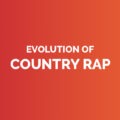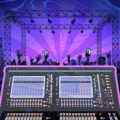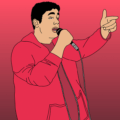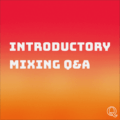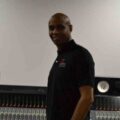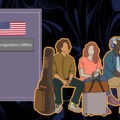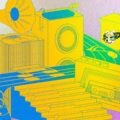Every decade offers distinctive music, style, and pop culture trends. The 50s were all about the birth and sculpting of rock ‘n’ roll, the 60s introduced the Beatles and the British invasion, the 70s gave us disco and a super muffled drum sound, but one decade shines especially bright when it comes to music: the 80s. Time and time again we’ve seen the phenomenon come back from the past to take over the pop charts of the present.
Big hair, big sound, and big money were only some of the trademarks that defined this extravagant decade. Besides all of the great television shows and movies that the 80s produced, what really elevated this iconic time period to the next level was its music. With the continuous discovery of new technologies, music producers had the world at their fingertips. But what makes an 80s song so catchy and why do modern artists gravitate towards a sound pallet that was popular some forty years ago? Let’s take a look at why popular musicians are throwing us back to the past by incorporating retro pop elements in their sound.
Synthesizers
One of the most important instruments of the quintessential 80s sound was – you guessed it – the synthesizer. Many synths already existed at the turn of the decade. In the early 60s, Robert Moog started designing the first synths by connecting patch cords together from different modules. This allowed him to create and shape sounds with this newly invented process. With that came the Moog Modular System 55, which was massive and quite expensive at the time. So, when the 70s arrived, a new and improved Moog synth was ready to hit the market: the Minimoog. It was the first synthesizer to be sold in music stores.
Read about how synth trailblazers created iconic film soundtracks in our Top 10 Horror Movie Scores Through the Decades article.
Entering the digital era of synths, it is impossible not to mention the Yamaha DX7. This was one of the first successful digital synths. The nice, smooth electric piano sound that can be heard in many hits was thanks to this piece of equipment. Artists like Michael Jackson, Kenny Loggins, Whitney Houston and A-Ha all used the DX7 in massively popular songs. While other synths were categorized as “warm”, this one was mostly “harsh” and “glassy”, and produced a strong sonic edge. If you’re a fan of the movie Top Gun, you know that “Danger Zone” by Kenny Loggins is an absolute hit. Those first five bass notes were the “Bass 1” preset on this synthesizer.
Kenny Loggins – Danger Zone (Official Audio – Top Gun)
Another staple from the 80s was the Roland Juno-6. Greatly appreciated for its different features like the built-in chorus effect, artists like WHAM!, Madonna, Cyndi Lauper, and The Eurythmics found great success producing music with this synth.
This machine is purely analog, meaning that it uses voltage-controlled circuits, such as oscillators, filters and amplifiers to generate sounds as opposed to a digital synth that uses some form of computer to generate sound. Analog synths are usually known to have a warmer, richer sound. Other analog synthesizers from that era were the Oberheim OB-Xa, Prophet-5 and the Roland Jupiter-8.
Here’s a Spotify playlist featuring songs made with the Juno:
Guitars
One of the most popular guitar sounds of the time period was obtained using a Fender Stratocaster. Some guitarists known for rocking the Statocaster are Stevie Ray Vaughan, Jeff Healey, Rory Gallagher, Mark Knopfler, Nile Rogers, and the list goes on. Many of these guitar tones were clean rather than distorted, although a fair amount of rock guitarists didn’t hold back on the use of distortion. Some guitarists used time-based effects like chorus, flanger, reverb and delay to get a rich sound. Others even used “splitter boxes” to route the guitar’s audio to two separate amps in order to reach a wide stereo image.
Another widely popular guitar tone was the paw-muted flanger, phaser or chorus distortion that can be heard in various songs like “Ain’t Talkin’ ‘Bout Love by Van Halen”, and “You Give Love a Bad Name” by Bon Jovi, just to name a few. This technique was achieved by having guitarists place their palms on the bridge of the guitar to choke any resonance coming from the guitar strings. This tone was observed more in the rock genre than anywhere else.
Drums
This decade brought a big change to the drum sound as well. Drum kits kept getting bigger and flashier – think Neil Peart’s kit from Rush, Alex Van Halen’s kit from Van Halen, or Phil Collins’ kit from Genesis. The use of gated reverb was very popular and it allowed drummers to have that arena feel while being in a dead-sounding studio space.
Some of the songs which make use of the technique include In The Air Tonight by Phil Collins, Right Now by Van Halen and Time Stand Still by Rush.
While this was happening, drum machines were hitting their stride as well. The Linn LM1, the Roland TR-808 and the E-Mu Drumulator were some of the decade’s most popular ones. What was great about these drum machines was that each drum sequence was quantized, or snapped to a rhythmic grid. In some cases, it allowed songs to be “tighter” in time. Drummers often mixed acoustic drums with drum machines sounds to give an interesting texture to the percussion elements in a song.
Distinct Musical Composition
Beyond their signature use of audio equipment, the 1980s also defined themselves by spawning distinctive chords, melodies and rhythms. The use of “sus”, or suspended chords was very popular on keys and guitar. These dreamy voicings were created out of sheer innovation: some of the synthesizers had limited polyphony, meaning that only a certain amount of notes could be played at the same time. For example, the Juno-6 had a 6-voice polyphony, meaning that only 6 notes could be played at a time. The Jupiter-8 had an 8-voice polyphony – the name of the synthesizer was often related to the number of voices it had. This limitation forced musicians to find chord progressions that would sound as full as possible while only using some notes.
As previously mentioned, a lot of 80s songs featured drum machines. Since these were relatively new back then, it was common to hear songs with basic drum patterns. Artists weren’t experimenting with the drum machine, but rather using it to create a solid foundation on which to write a song. “Tarzan Boy” by Baltimora has the same beat looping across the entirety of the song – having the kick drum on 1 and 3, and the snare drum on 2 and 4. The hi-hats compliment the ensemble by playing eighth notes.
As for those era-defining bass lines? They were often played using a synthesizer. A significant amount of 80s songs have bass parts that are almost too complicated to replicate on an electric bass guitar because of the way they were played on a keyboard. Famously, “Time After Time” by Cyndi Lauper falls into this category.
Just what is it that made the quintessential 80s sound enjoyable to so many people? Maybe it’s that nothing quite like it had ever been done before. The blend of drum machines, keyboard bass lines, synthesizers and vocals pioneered a brand new form of music production that took pop culture by storm.
The 80s in Modern Times
Musical influences from the 1980s are more than just relevant today – they’re commonplace. Artists consistently use sounds that were made popular by generations preceding them. Ironically enough, today’s technology allows us to recreate elements from the past. Take Charlie Puth. His use of vintage musical equipment is an ode to the 80s, with a modern twist. Another great example is The 1975. Their music consists of retro guitar licks, synth sounds and bass lines. Some of these artists are trying to re-invent popular music by borrowing from their parents’ generation.
The 1975 – Oh Caroline (Official Video)
It’s impressive how music from over 40 years ago continues to assert its presence in current pop culture and music production. From soundtracks of recent television shows like Stranger Things, or popular bands like The 1975 or The Weeknd, the 80s continue to impact artists from generations that followed. We are at a point where the 80s-inspired music we hear today isn’t a revival – it’s its own genre.
Written by Liam Clarke
Illustrations by Yihong Guo





